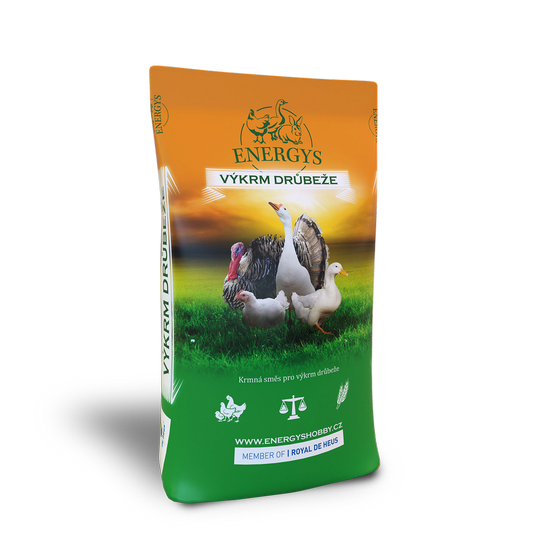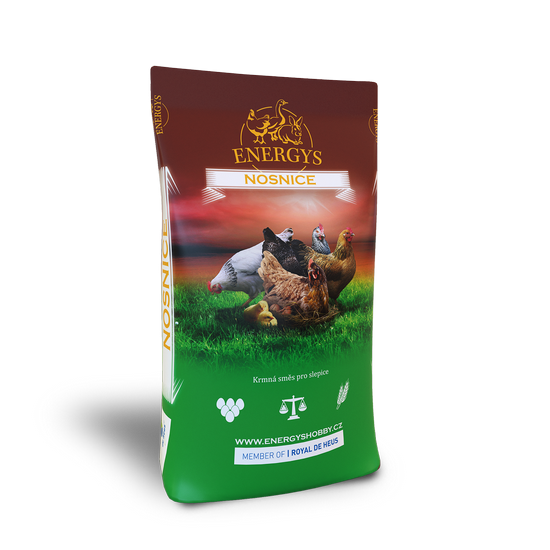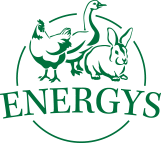Rabbits
Poultry
Laying hens
Quails
Guinea pigs
Pigs
Ostriches
Sheep and goats
Pigeons
Pheasants
Forest animals
Hens aren’t laying?
Many factors affect egg production – laying by hens – internal (e.g. genetics, the health of the hen or its age), and also external (e.g. feed, temperature of the environment, amount of daylight). Some factors we are able to influence and we will then complain a little less that our hens are not laying.
Age of the birds
Laying takes place in specific cycles, commercial hybrid layers usually start laying at around 150 days of age, and keep laying for around 11 months, during which time they lay 250 – 280 (300 eggs). The bird then stops laying and moults for 5 – 8 weeks. During the second laying period, the bird lays fewer eggs (a reduction in the number of eggs by up to 20% is stated), but these are larger (by approx. 5-8%).
Commercial layers must be healthy
Each illness or deficiency reduces egg production. Even chicken mites can be a cause of reduced egg production, even significant reduction. Some infectious diseases can stop young layers from laying completely – for instance the infectious bronchitis virus destroys the ovaries of growing pullets. The hens then never start laying, even though they look like healthy layers (commercial layers are usually inoculated).
Feed the layers
It is given must provide them with sufficient nutrients (energy, proteins, vitamins and minerals) for egg production. The most frequent problem is a lack of proteins and minerals – the hen uses around 18 grams of protein and 4 grams of calcium to produce each egg and nutritional efficiencies have a serious impact on production.
Light
Sufficient daylight, optimally 14 to 16 hours, is essential to maintain reproductive functions. The shorter days in autumn and winter affect the hormonal condition of the layers, as well as the amount of feed they eat throughout the shorter period, which means fewer eggs are laid.
Temperature of the environment
The optimum temperature for layers is around 12 to 20 degrees, freezing weather has a negative impact on laying, but temperatures over 30 °C are also not optimal. We can particularly influence the temperature in winter by suitably insulating the coop (the temperature in the coop should never drop below freezing, not even during very cold weather. High summer temperatures can be mitigated by shading the run and also providing the opportunity for a dust bath in dry soil or a dust bath under the trees, which will contribute to the hens’ comfort in very hot weather.
Related products

POULTRY UNI 30
A mashed concentrate for fattening of all categories of poultry, which includes the highest quality soja. It is mixed with cereals in a ratio of 20-40% (by type or phase of fattening). It contributes to fast growth and a high meat content. It does not contain coccidiostats.

LAYER REPRO
Granulated feed for laying hen breeds. Supports higher hatching rates and the successful development of the embryo. Higher content of chosen substances). The laying hen must have access to an adequate amount of potable water.

LAYER GOLD
Granulated feed for laying hens when laying. Supports high laying eggs with a solid shell and a beautiful yolk color. It follows the feeding of the Chicken MIDI mixture. Indicative feed consumption per 1 year ranges from 50-60 kg / piece.

LAYER KLASIK
A powered feeding mix intended for laying hens. With its rough shredded structure it contributes to maximum usability.

CHICKEN MIDI
From the 5th week to the end of the 20 week old chickens. It follows on from feeding with the Chicken MINI feed. Through its make up it helps in the correct development of the organism and with future high usability. It doesn’t contain coccidiostats. It is produced in two forms, granulated and powder.

CHICKEN MINI
A crumbled compound feed without anti-coccidiosides. Suitable for reared chickens of the laying hen type till the end of their 4 weeks of age. It contains a balanced ratio of nutrients supporting the correct development of chickens. For weaning chickens the following mix is CHICKEN MIDI.
